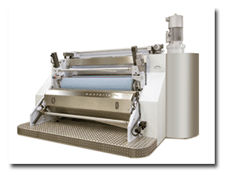US textile industry representatives in Washington are concerned that the federal government’s
spending plans for Fiscal Year 2008 offer little hope for stepped-up enforcement of trade
agreements and battling fraud, while cutting back on funding for research designed to make the
industry more competitive.
The massive $515 billion multi-agency spending bill passed by Congress essentially leaves
funding for textile-related government activities at FY 2007 levels and will unlikely stimulate
greater efforts in areas domestic manufacturers say are important to their survival.
Funding for the Department of Commerce, which monitors import and export trends and enforces
anti-dumping and countervailing duty laws, remains flat. The office of the US Trade Representative
(USTR), which negotiates trade agreements and is the main watchdog for monitoring China’s
compliance with its World Trade Organization agreements, also will be funded at about 2007 levels.
The USTR has been devoting many of its resources to negotiating free trade agreements, and US
textile industry interests are concerned that this is being done at the expense of enforcement of
existing agreements.
Textile lobbyists in Washington see the funding as a major setback in their efforts to get
more government control over surging imports from China. As one lobbyist put it, “With $96.6
billion in Chinese textile and apparel imports in the past 12 months, there are a lot of
opportunities for mischief.”
Cass Johnson, president of the National Council for Textile Organizations, sees the funding
as a major setback for efforts by the US industry to get better enforcement of trade agreements,
particularly with China. He notes that the office of the USTR currently has only one attorney
assigned to monitoring China’s WTO compliance, in spite of the fact that there is a need to
increase resources for enforcement. He is equally concerned that US Customs and Border Protection
is not devoting sufficient staff and efforts to crack down on illegal textile and apparel imports.
As a result of the Christmas-time flap over unsafe imports from China, the Consumer Products
Safety Commission received a substantial boost in its funding. While US textile manufacturers hope
some of the funding for the understaffed agency can go toward creating a national flammability
standard for bedding, the agency is most likely to concentrate on imports of toys and other
children’s products.
Long-standing government support for textile and apparel research at the National Textile
Center (NTC) and the Textile Clothing Technology Corp. ([TC]
2) took a major hit, as funding for the coming year was cut to $4.7 million compared
with last year’s $16 million. Officials at [TC]
2 and the NTC have agreed to a split that would give [TC]
2 $1.7 million and NTC $3 million, and they are in the process of developing scaled-down
project proposals.
January 15, 2008





